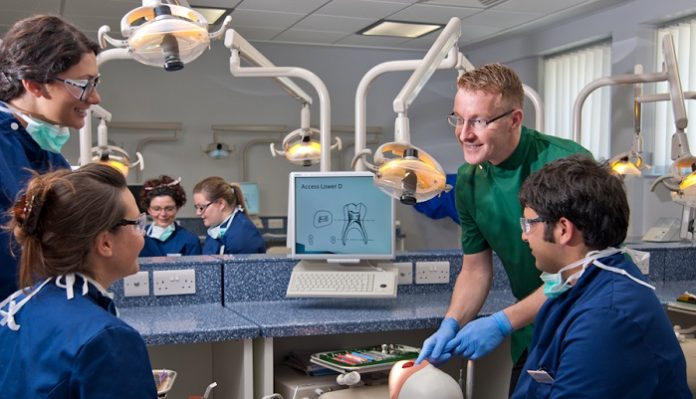
Technology can help professional and academic staff do their job more efficiently but it can also produce efficiency gains for students. Lucy Haire looks at what universities are doing to introduce technology to improve teaching and learning for students.
One of the key drivers of technology in all its guises is the quest for efficiency. Efficiency gains were behind the first lever that made it easier to lift, the first wheels that sped up transport and, more recently, the world wide web which has scaled and accelerated the production, analysis and exchange of information on an almost unfathomable scale.
In learning and teaching technology, efficiency drivers are strong, and our universities and colleges are replete with examples.
Ben Steeples, learning technologist at Essex University says, “Technology can improve efficiency by encouraging standardised approaches to common processes and automating low-level repetitive tasks.” Ben is developing the University of Essex’s online coursework submission and feedback system using funding from the Higher Education Academy’s Vice Chancellor’s Strategic Enhancement Initiative. The system alerts students to upcoming deadlines, provides a secure website for uploading coursework and includes reporting tools which are integrated with the university’s student records. In addition to reducing the administrative burden of processing coursework, the system also supports a set of feedback tools.
Practical efficiency gains
The University of East Anglia has developed a similar system. Helena Gillespie, Academic Director for Learning and Teaching Enhancement, says that “While using an electronic coursework marking process will not in itself make staff quicker at reading and responding to student work, I do believe that there are possible efficiency benefits.” The East Anglia system collates notes, videos, feedback and FAQs so that students have supporting material for assignments all in one place.
Technology can improve efficiency by… automating low-level repetitive tasks.
At Birmingham City University, staff and students have developed a web-based research app that helps student teachers to capture and analyse their observations of classroom practice. The project has allowed Birmingham to build a community of students working on practice-based enquiry. The practical efficiency gains in this case come from the bringing together and speeding up of several steps such as photography, audio recording, filming, editing and commenting. Collaborative learning is encouraged by sharing information, ideas and analysis and the whole app is designed to underpin a conceptual framework for good teacher education.
At the London School of Hygiene and Tropical medicine, staff undertaking professional development are encouraged to reflect on their teaching skills through the use of blogs and wikis. Lorraine Locke, course director of the PGCILT comments that “Informal publishing of this nature can really aid focus and engage others. I’ve seen quite a lot of light-bulb moments”.
Assessment of students, a key component of learning and teaching, has been made more efficient by the development of dedicated software and platforms. One example, LiftUpp, an app-based service developed at the University of Liverpool’s medical faculty and now used widely across the UK, creates a central core of knowledge, skills and competencies which are then mapped to exam modules and work-based development.
Tutors and students can access the system anywhere to obtain a real-time overall performance picture. This technology is capable of handling the complexity of data associated with lengthy courses, multiple settings for learning including classrooms, labs and clinics, and the requirement to incorporate rigorous professional body standards.
Potential efficiency gains can be scuppered though if learners don’t know how to use educational technology. Rose Luckin, professor of learner centred design at the UCL Institute of Education said in a Times Higher Education supplement that “Although students arrive at university comfortable with technology, it doesn’t mean they know how to use it effectively for learning purposes.” Cost-benefit analysis is crucial when assessing whether to purchase learning technology. Every university and college has a story to tell about software and devices being purchased and never used, or being implemented badly without proper training and support, so wasting student and staff time, the very antithesis of efficiency.
Embracing time-saving
There is an argument that technology has raised the bar in terms of educational attainment. Now that so much information is at our fingertips, more attention can be paid to what students do with it and how higher order skills such as synthesis, analysis, interpretation and creativity are displayed. Rose Luckin again comments that “There may be disappointment that university study is harder than they [students] were expecting, and that technology doesn’t automatically make doing a degree any easier.”
Learning and teaching technology can support efficiency when it is carefully designed, skilfully implemented and properly supported. It can help with scaling, reduce errors, save time and money.
Anything that reduces time spent on lower level tasks by the student and teacher is to be welcomed, and technology which specifically supports a richer learning experience is to be embraced.







